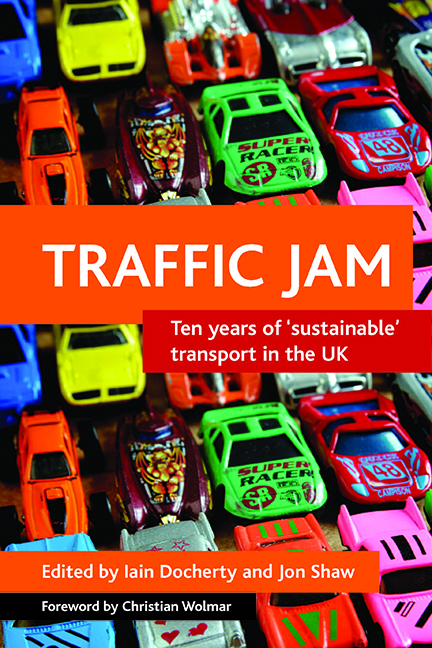Book contents
- Frontmatter
- Dedication
- Contents
- List of tables, figures and boxes
- Foreword
- Preface and acknowledgements
- List of acronyms
- Notes on contributors
- Part One Policy and politics
- Part Two Progress in policy implementation
- Part Three Ten years since A new deal for transport – signposts to the UK’s transport future?
- Index
nine - Transport for London: success despite Westminster?
Published online by Cambridge University Press: 21 January 2022
- Frontmatter
- Dedication
- Contents
- List of tables, figures and boxes
- Foreword
- Preface and acknowledgements
- List of acronyms
- Notes on contributors
- Part One Policy and politics
- Part Two Progress in policy implementation
- Part Three Ten years since A new deal for transport – signposts to the UK’s transport future?
- Index
Summary
London has always differed in many respects from the rest of the UK. Not only is it the largest conurbation – matched only within Europe by Paris – but it has a far greater dependency on rail systems, and a high level of public transport use. Its economy differs substantially, notably through the major role played by financial and business services. While manufacturing was important in the past, it is now negligible, employment being dominated almost wholly by the service sector. In recent years, these differences have become more marked, with public transport usage growing substantially from an already high level of trips per capita. Car ownership rates have changed very little in 15 years despite significant economic growth. Per capita incomes are high, albeit varying very substantially within different parts of the capital. These differences have been accentuated by contrasts in policy measures, notably the high level of financial support for public transport, and the adoption of congestion charging.
In certain respects, London may be compared with the UK's other devolved territories (Scotland, Wales and Northern Ireland; Chapter Two). In particular, the directly elected Mayor exercises extensive powers, together with the role played by the Greater London Assembly (GLA). At the same time, however, its population of 7.5 million (TfL, 2007a) comfortably exceeds that of the largest other devolved territory – Scotland – and its Gross Domestic Product (GDP) exceeds that of Scotland and Wales combined. In 2006, its gross value added (GVA) comprised 17.4% of the UK total, compared with 8.1% for Scotland and 3.8% for Wales (the per capita figures being £26,192, £17,789 and £14,396 respectively – see National Statistics, 2007). Its boundary is also very tightly drawn. Whereas Scotland, for example, encompasses a largely self-contained urban belt surrounded by extensive rural regions, the Greater London boundary is simply that of the former Greater London Council (GLC), not even encompassing the whole of the contiguous built-up area – it excludes significant settlements such as Watford and Epsom – while the commuter catchment extends much further into south east England. Hence, in areas of similar urban characteristics, very marked differences now exist in public transport services – bus service levels in particular – depending on whether or not a place falls within London's administrative area.
- Type
- Chapter
- Information
- Traffic JamTen Years of 'Sustainable' Transport in the UK, pp. 183 - 204Publisher: Bristol University PressPrint publication year: 2008



